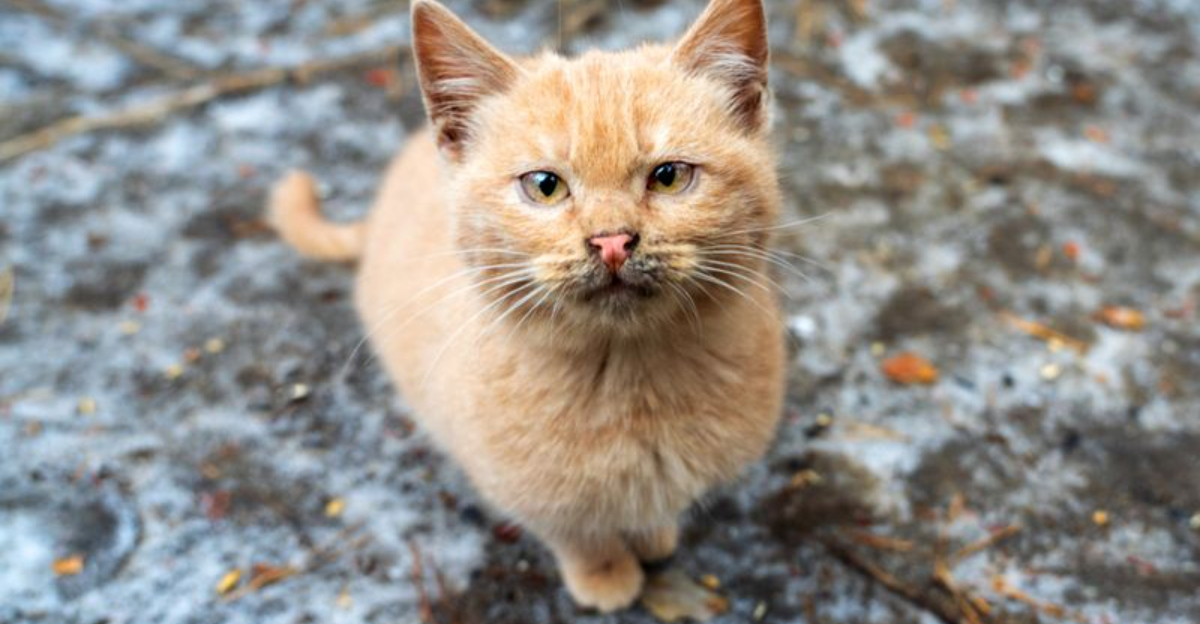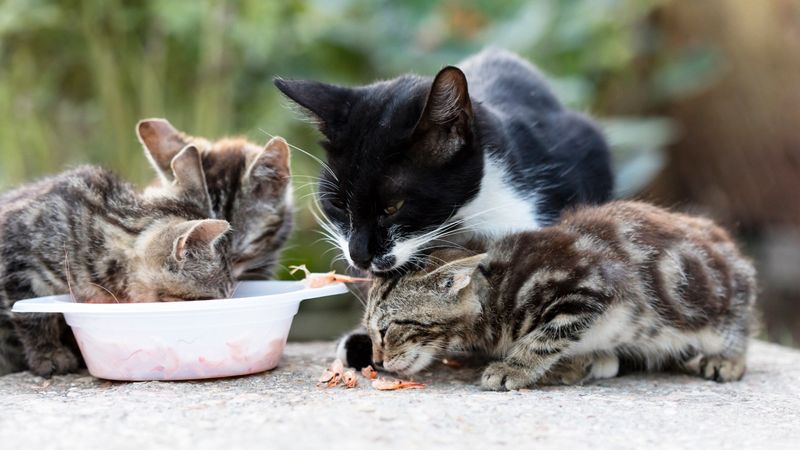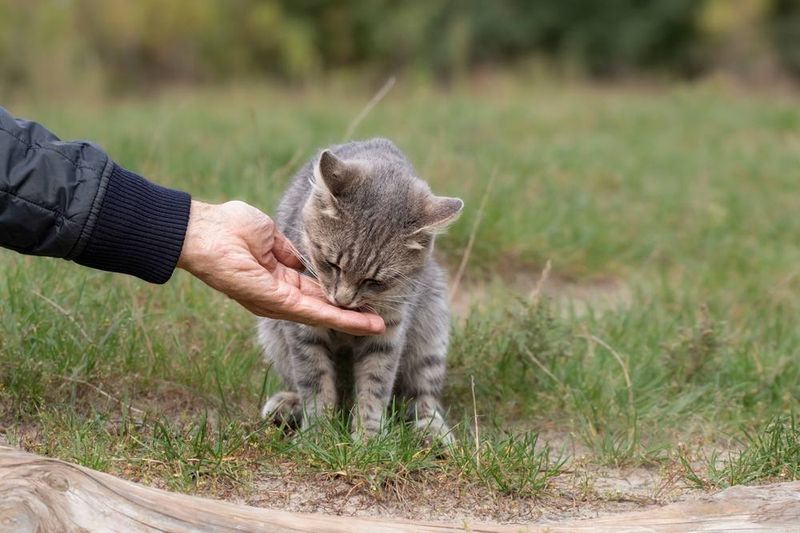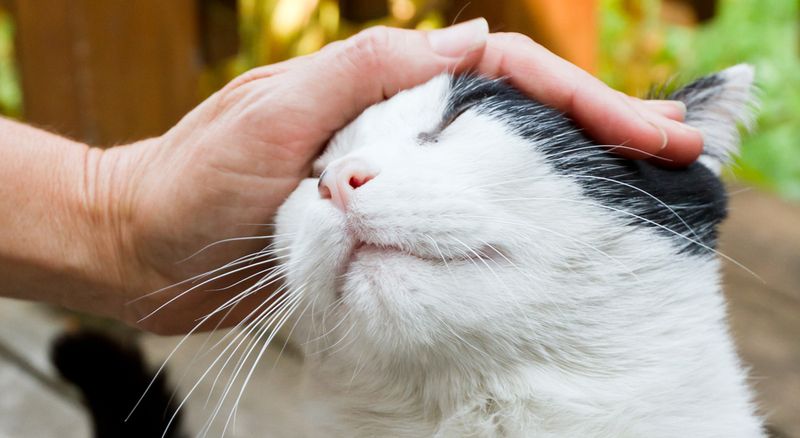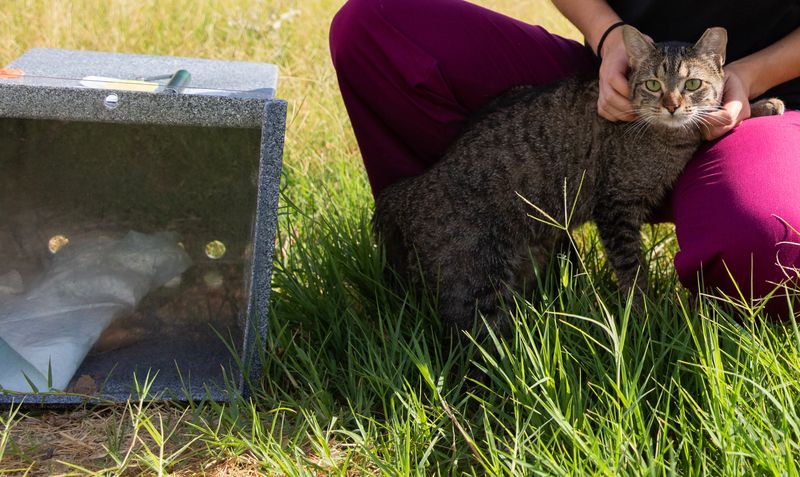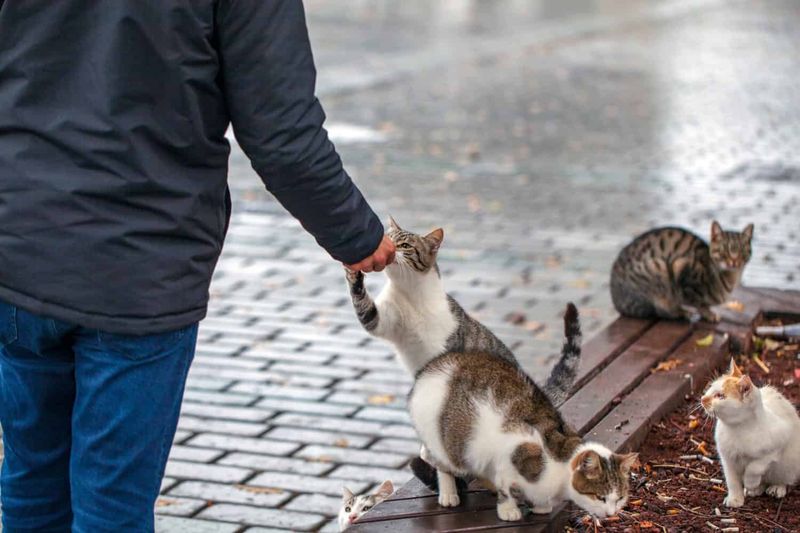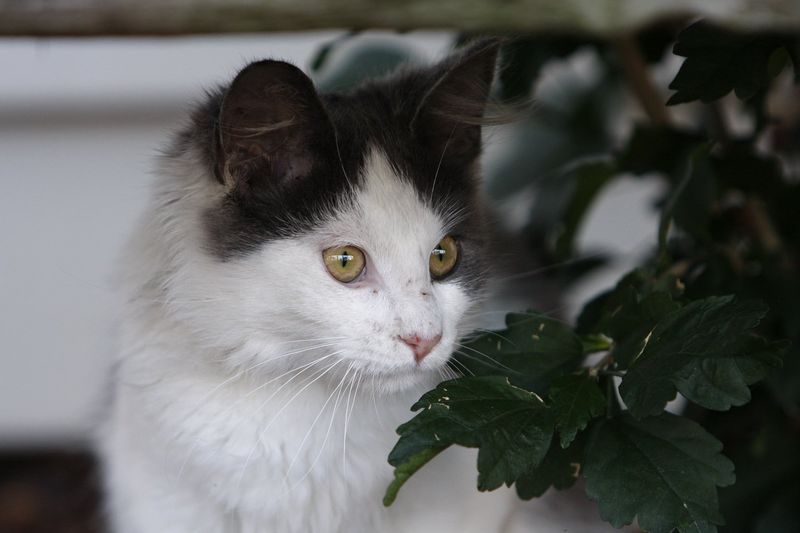📖 Table of Content:
- 1. Respect Their Space
- 2. Offer Food and Water
- 3. Avoid Direct Eye Contact
- 4. Establish a Routine
- 5. Sit Low and Stay Still
- 6. Speak Softly and Calmly
- 7. Use Treats to Encourage Closeness
- 8. Let Them Make the First Move
- 9. Introduce Toys
- 10. Create a Shelter
- 11. Be Patient and Consistent
- 12. Consider a Vet Visit (Eventually)
Stray cats are often survivors of hardship, navigating the world with caution born from experience. Unlike house pets raised in safe, loving environments, strays are used to fending for themselves, which can make them hesitant or even fearful around humans. Earning their trust is not only an act of compassion, but also a gradual, delicate process that requires understanding, patience, and consistency.
The process of befriending a skittish stray cat goes far beyond simply leaving out a bowl of food. It involves creating an environment where the cat feels secure enough to let down its guard, and forming a connection that honors the cat’s need for autonomy. While some cats may warm up quickly, others may take weeks or even months to approach, much less accept affection.
This guide outlines 12 carefully considered steps to help you build trust with a stray cat who might be scared or shy. Each step respects the cat’s emotional boundaries and encourages you to proceed with empathy. Whether your goal is simply to care for a neighborhood stray or eventually bring one into your home, these techniques can help form the foundation of a lasting, trust-based relationship.
1. Respect Their Space
Giving a stray cat space is the first and most vital act of kindness you can offer. Don’t rush toward them or try to scoop them up — this will only reinforce their fears. Instead, let the cat watch you from afar, observing your actions and learning that you’re not a threat. Many strays feel cornered easily, so always make sure they have an escape route when you’re nearby. You may be eager to help, but the cat needs time to feel safe around your presence. Let your body language speak calmness and patience. Allowing them the choice to approach on their own terms builds a foundation of mutual respect.
2. Offer Food and Water
Providing nourishment is a clear signal of goodwill to a stray cat. Start by placing food and water at a distance where the cat feels comfortable approaching after you leave. Gradually, as trust grows, you can stay closer and shorten the distance over time. Use enticing, aromatic food like tuna or soft wet food to grab their attention. The goal is not just to feed them, but to begin associating your presence with something positive. Avoid hovering or watching them too closely while they eat — give them that vulnerable moment in peace. This steady act of kindness speaks louder than words, especially to a cautious animal.
3. Avoid Direct Eye Contact
Eye contact carries strong meaning in the animal world, and for cats, a direct stare can be intimidating. Rather than locking eyes, try to glance gently or blink slowly when the cat looks your way. This “slow blink” is actually a feline-friendly signal that says, “I’m relaxed and I trust you.” Incorporating this subtle body language shows you’re tuned into their world. You may even notice the cat blinking back — a clear sign they’re beginning to feel safer. Instead of relying solely on words or food, let your eyes help build nonverbal trust. This technique works wonders when paired with quiet, calm behavior. It helps lower defenses without ever saying a word.
4. Establish a Routine
Creating a predictable schedule builds a sense of safety for a stray cat. Animals thrive on routine, and when you appear at the same time each day, it shows reliability. Whether you’re feeding them, cleaning the area, or simply sitting nearby, repetition becomes reassuring. Over time, the cat will begin to associate your presence with stability and care. This sense of consistency helps counterbalance the uncertainty they’ve experienced living on the streets. Don’t be discouraged if progress seems slow — even small, repeated actions can leave a big impression. By showing up day after day, you’re teaching the cat they can count on you.
5. Sit Low and Stay Still
Rather than towering over the cat, lower yourself to their level to seem less threatening. Sitting on the ground or crouching lets the cat see you as part of the environment rather than an imposing figure. Stay still and let them observe you from a safe distance — even if that means waiting silently for long periods. Your stillness signals that you’re not a threat and that you respect their need for space. The more time you spend simply existing calmly near them, the more they’ll begin to feel at ease. You’re showing that being around you doesn’t come with danger or pressure. This nonverbal language is key to connection.
6. Speak Softly and Calmly
Your voice can be a powerful tool in building comfort, especially when used gently. Try using a low, soft tone and speak slowly, as if talking to a baby or a nervous child. Repeating the same word or phrase daily — like “Hey buddy” or “It’s okay” — helps the cat associate your voice with safety. Avoid sudden outbursts or high-pitched sounds, which may startle them. Even if they don’t understand the words, the emotional tone will come through clearly. Over time, your voice becomes part of their daily rhythm. It’s one more element that makes your presence familiar and reassuring.
7. Use Treats to Encourage Closeness
Treats are an excellent bridge between fear and curiosity. Start by placing them at a comfortable distance from the cat and slowly work your way closer over time. The key is to never force interaction — let their desire for the treat drive the pace. Try tossing a few near you while you’re seated, creating a trail that invites them closer. Each treat retrieved near you is a mini success that builds momentum. Be patient and celebrate small signs of trust, like sniffing or approaching within a few feet. This reward-based approach reinforces that good things happen when you’re around.
8. Let Them Make the First Move
Trust must be earned, not demanded. Once the cat starts venturing closer, it’s crucial that you let them initiate physical contact. Resist the urge to pet them first; instead, offer a hand slowly and let them decide if they want to investigate. Don’t hover your hand over their head — keep it low and still. If they rub against you or allow a brief touch, consider it a major milestone. These initial gestures may be brief, but they signal a shift in the relationship. Giving the cat full control over the interaction helps them feel empowered and safe.
9. Introduce Toys
Engaging a stray cat in play can be a low-pressure way to build a bond. Use a wand toy, string, or even a crumpled paper ball to awaken their hunting instincts in a safe, fun way. Interactive toys allow for positive engagement without requiring close physical contact. Many shy cats open up during play, revealing a side of themselves you may not see otherwise. Keep sessions short and upbeat to maintain interest and prevent overstimulation. If they show curiosity or participate, even briefly, it’s a strong sign of developing trust. Play fosters joy, which naturally leads to connection.
10. Create a Shelter
Providing a safe place for the cat to retreat is a powerful gesture of care. Whether it’s a makeshift cardboard box with a blanket or a small outdoor cat house, it communicates that you care about their comfort. Place it somewhere quiet and protected from weather and foot traffic. A shelter not only offers warmth but also builds routine — the cat may begin returning to that spot regularly. Add a soft towel or piece of your clothing to introduce your scent. Over time, they’ll associate the space with security and your presence. Shelter is more than physical — it represents stability.
11. Be Patient and Consistent
Progress with stray cats rarely happens overnight. Celebrate the small moments — the glance that lasts longer, the inching a little closer, the first meow. Every cat has its own emotional timeline, and forcing progress can set you back. Stay consistent with your visits, tone, and offerings. Even on days where nothing “happens,” you’re building a foundation of familiarity. Patience speaks louder than any action; it says, “I’m not going to give up on you.” Eventually, your consistency will pay off in deep trust and connection.
12. Consider a Vet Visit (Eventually)
At a certain point, once the cat has accepted touch and closeness, it may be time to think about their health. Use a humane trap or crate only if the cat is comfortable enough for it, and avoid surprises. Consult with local vets or rescue groups on the safest way to proceed without damaging the bond you’ve built. Health checks are vital — many strays carry parasites or need vaccinations. But this step must come after trust is firmly in place. Plan carefully to maintain that relationship long-term. A healthy cat is a happy one, and caring for their health shows the ultimate level of commitment.
